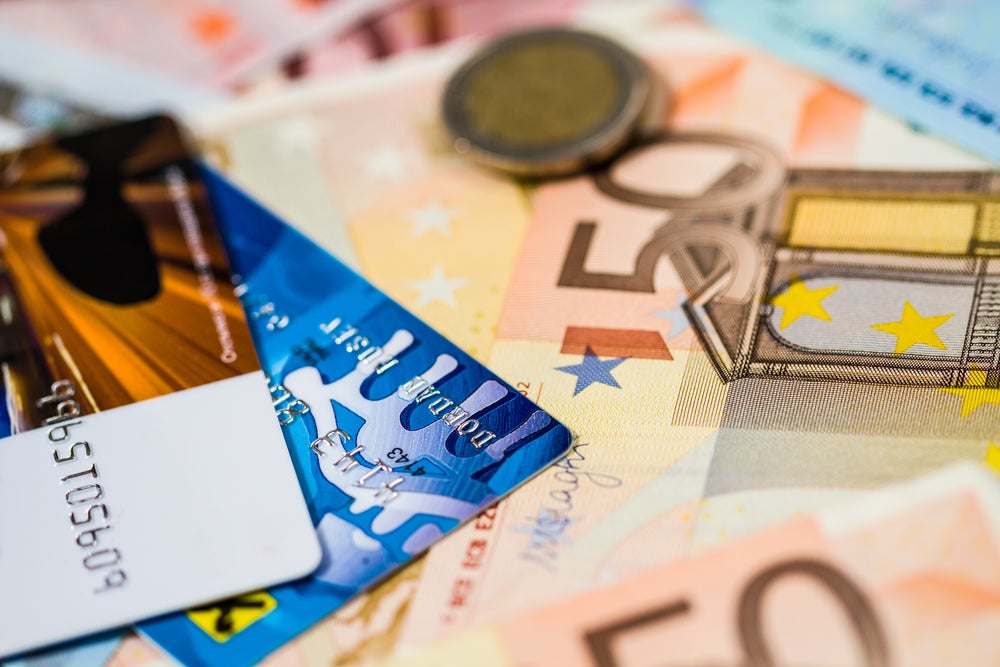
The cards industry provided Brazilian banks with gross operating profits of R$14.5bn ($6.97 billion) in 2011, representing 23% of the Brazilian banking sector’s profits in 2011, a study reports. Robin Arnfield investigates.
Brazilian retail financial service consultancy Boanerges & Cia. analysed the profitability of the Brazilian credit and debit card issuing and acquiring industries, using data supplied by Banco Central do Brasil, the Brazilian central bank. All the figures quoted by Boanerges in its Analysis of the Profitability of the Brazilian Cards Issuing and Acquiring Market study exclude inflation.
"The overall cards industry has had three phases of growth between 2005 and 2011: initial very fast growth, followed by a slowdown, and finally a recovery," says Boanerges Ramos Freire, chief executive of Boanerges & Cia. "Between 2005 and 2006, gross operating profits rose by 22%, with the growth rate falling to 11% between 2006 and 2007. However, the global financial crisis in 2008-2009 resulted in growth slowing to 4% and 9% a year in 2007-2008 and 2008-2009 respectively. Finally, growth recovered to 16% in 2009-2010 and 18% in 2010-2011."
The overall value of Brazilian credit and debit card transactions grew by an average of 18% a year from R$227.1 billion in 2005 to R$607.0 billion in 2011, Boanerges says.
Smaller share
The banks’ gross operating profits from cards issuing and acquiring accounted for 2.39% of the R$607 billion card transactions occurring in 2011, according to Boanerges. However, their cards profits accounted for 2.69% of the R$227.1 billion cards transaction value in 2005.
How well do you really know your competitors?
Access the most comprehensive Company Profiles on the market, powered by GlobalData. Save hours of research. Gain competitive edge.

Thank you!
Your download email will arrive shortly
Not ready to buy yet? Download a free sample
We are confident about the unique quality of our Company Profiles. However, we want you to make the most beneficial decision for your business, so we offer a free sample that you can download by submitting the below form
By GlobalDataIf profitability had remained at the same level in 2011 as in 2005, then the banks would have had R$16.3 billion worth of cards industry profits in 2011, R$1.8 billion more than the gross operating profits they received from cards.
The value of debit card transactions rose from R$70.9 billion in 2005 to R$198.5 billion in 2011, while credit card transactions rose from R$156.2 billion to R$408.5 billion in the same period.
"Debit card transactions are growing very fast partly because of higher levels of bancarisation and also because more people are becoming aware of the debit function on their cards," says Ramos Freire. "A large number of Brazilian cards contain both credit and debit functions, and in the past there has been a lack of awareness by cardholders about the debit function. Cardholders are increasingly using their debit cards for purchase transactions, instead of just using their (separate) ATM cards to withdraw cash."
Comparing acquirers and issuers
While the overall cards industry’s profitability grew at an average rate of 16% per year from R$6.1 billion in 2005 to R$14.5 billion in 2011, acquirers saw faster growth than issuers.
The acquiring market’s profitability grew by an average of 22% per year from R$1.4 billion in 2005 to R$4.5 billion in 2011. Issuers saw profitability grow at an average of 13% per year from R$4.7 billion to R$10.0 billion during the same period.
"Issuers experienced a decline in profit growth due to the impact of the 2008-2009 global financial crisis," says Ramos Freire. "This led to a rise in charge-offs and slower growth in transaction volumes. Issuers were also impacted by higher costs and by higher competition, which pushed margins down."
"However, issuers have seen rapid growth in profitability and transactions since 2010, partly because they are targeting new market segments such as the unbanked and members of the newly enlarged middle class, socio-economic class C," Ramos Freire says.
Over the last few years, Brazil has seen huge growth in the numbers of previously unbanked consumers migrating from socio-economic class D to C.
Regulatory reform
Acquirers saw a significant slowdown in profit growth following the regulatory reform of the acquiring market in 2010, says Ramos Freire.
In July 2010, the Central Bank removed the ban on a single acquirer processing both Visa and MasterCard transactions. The ban had resulted in a parallel monopoly, whereby Redecard had exclusive rights to MasterCard acquiring, and VisaNet (now called Cielo) exclusively acquired Visa cards.
Redecard is controlled by Itaú Unibanco, while Cielo is controlled by Banco do Brasil and Bradesco. Government-owned Caixa Econômica Federal has a minority stake in Cielo.
"The ending of the parallel monopoly has led to greater competition in the acquiring market," says Ramos Freire. "For example, POS terminal rental income and merchant discount rates have declined, while incumbent acquirers Redecard and Cielo have had to invest in new products and services. Also, we are seeing the gradual entrance into the Brazilian acquiring market of new domestic entrants such as Santander Brasil and Banrisul, as well as international players such as Elavon and Global Payments."
In 2009-2010, acquirers saw their gross operating profits decline by 2%, followed by 0% growth in 2010-2011. By contrast, issuers saw gross operating profits rise by 26% in 2009-2010 and increase by 27% in 2010-2011.
In 2007-2008, issuers saw gross operating profits fall by 16%, followed by a rise of 5% in 2009-2010. During the same period, acquirers saw their gross operating profits rise by 29% and 11% respectively.
"Prior to the ending of the parallel monopoly in 2010, acquirers saw very steep rises in profitability," comments Ramos Freire.
Analysis
Acquirers saw their gross operating profits as a percentage of total transaction values rise from 0.6% in 2005 to 0.74% in 2011. During the same period, issuers saw gross operating profits as a percentage of total transaction values fall from 2.08% to 1.65% due to the effect of higher delinquency rates and growing competition.
Acquirers saw their gross operating profits as a percentage of revenues rise from 29% in 2005 to 42% in 2011, However, issuers saw their gross operating profits as a percentage of revenues rise from 30% in 2005 to just 34% in 2011.
The overall cards industry saw revenues rise from R$20.6 billion in 2005 to R$40.5 billion in 2011. Issuers’ revenues rose from R$16 billion in 2005 to R$29.8 billion in 2011, while acquirers’ revenues rose from R$4.7 billion in 2005 to R$10.7 billion in 2011.
Issuers saw their revenues from interest payments before charge-offs rise from R$10.7 billion in 2005 to R$22.8 billion in 2011, Boanerges says. However, charge-offs rose from R$2.3 billion in 2005 to R$10.6 billion in 2011.
Net revenues from interest payments (after charge-offs) accounted for 41% of issuers’ total revenues in 2011, compared to 26% from interchange, 18% from cardholder fees, and 15% from other revenue sources.
In 2005, net revenues from interest payments accounted for 53% of issuers’ total revenues, compared to 15% from interchange, 20% from cardholder fees, and 12% from other revenue sources.
In 2011, acquirers saw merchant discount rates (net of interchange) account for 66% of their total revenues, followed by 20% from terminal rental and connectivity fees, and 14% from other revenue sources.
In 2005, acquirers saw net merchant discount rates account for 71% of their revenues, followed by 24% from terminal rental and connectivity, and 4% from other revenue sources.
ABECS survey
A survey by Brazilian cards industry association ABECS (Associação Brasileira das Empresas de Cartões de Crédito e Serviços) published in October 2012 found Brazilian cardholders have increased their use of cards for purchases that were traditionally made with cash.
According to ABECS, 48% of survey respondents in 2012 said cards were their most frequent payment method for purchases in bars, cafes and restaurants, up from 42% in 2011, while 34% identified cards as their main method for buying museum, theatre, and cinema tickets, up from 29% in 2011.
The ABECS survey, which was conducted in June and July 2012, found that 75% of Brazilians now have a payment card, up from 68% in 2008. The greatest growth was seen with debit cards, with 62% of Brazilians possessing a debit card compared to 53% in 2008.
According to ABECS, 52% of Brazilians possess a credit card in 2012, up from 48% in 2008, and 28% of Brazilians have a store card, up from 26% in 2008.







